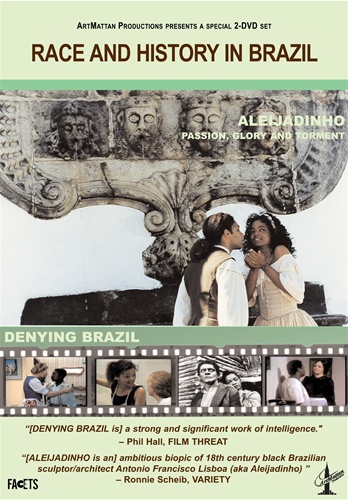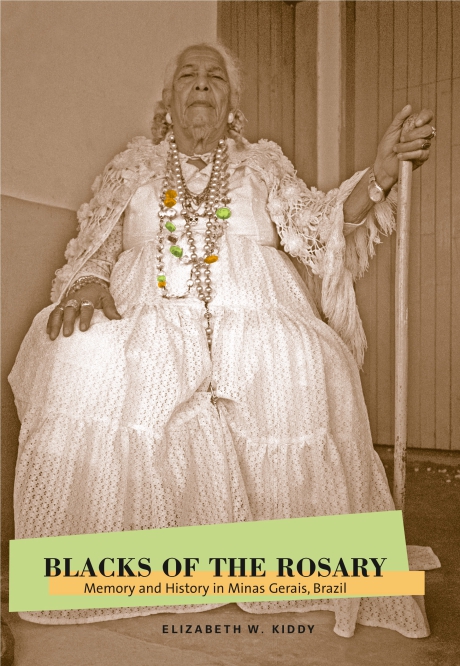Religion and Racial Identity in the Movimento Negro of the Roman Catholic Church in Brazil
Iliff School of Theology and The University of Denver (Colorado Seminary)
June 1995
302 pages
Alan Doyle Myatt
A Dissertation Presented to the Faculties of The Iliff School of Theology and The University of Denver (Colorado Seminary) In Partial Fulfillment of the Requirements for the Degree Doctor of Philosophy
This project is a study of the interaction of religion with the process of racial identity construction in the black movement within the Brazilian Roman Catholic Church. The fundamental problem facing the movement is how to construct a viable black identity in the midst of a social situation filled with ambiguity and opposition. The process of this social construction of racial identity is the key problem explored in this dissertation.
The multi-racial polity of Brazilian society includes many racial designations for Brazilians of African descent. These identities are supported by the notions of Racial Democracy and whitening. Racial democracy is the idea that Brazilian society contains very little racial prejudice and discrimination. Whitening is the doctrine that the extensive racial mixing in Brazil has the effect of creating an increasingly whiter society. The social status of blacks may allegedly be improved through whitening. In this context very few Brazilians choose to identify themselves as blacks.
The study uses Berger and Luckmann’s sociology of knowledge and James Scott’s theory of the resistance of subordinate peoples to domination as its theoretical framework. The thesis argued is that the movimento negro is attempting to build a black identity by drawing on the history of black resistance that has been largely hidden, and constructing a new universe of meaning. The movement draws upon liberation theology, traditional Roman Catholicism, and Afro-Brazilian religions to achieve this. The research was based on field work in Brazil and focused on the analysis of interviews with movement activists as well as movement publications, documents, and videos. Long interviews were conducted according to a prepared guide, but in an open-ended fashion.
It was found that the notions of racial democracy and whitening are not plausible and that they act to inhibit blacks from overcoming problems due to racial discrimination. It was also determined that Afro-Brazilian religions, Catholicism, and liberation theology provide resources that enable movement activists to create a new racial identity, involving an essentialist notion of blackness, that did not previously exist. The conclusion that religion is an important resource in resistance to domination was supported.
TABLE OF CONTENTS
- 1. RELIGION, RACIAL IDENTITY AND THE MOVIMENTO NEGRO: THEORY AND METHOD
- 2. THE HISTORICAL AND CULTURAL CONTEXT OF THE MOVIMENTO NEGRO: DEFINING THE BRAZILIAN RACIAL ETHOS
- 3. THE MOVIMENTO NEGRO IN THE ROMAN CATHOLIC CHURCH: ORIGINS AND ORGANIZATION
- 4. THE DAILY STRUGGLE: PERSPECTIVES FROM WITHIN THE MOVIMENTO
- 5. THE CONSTRUCTION OF RACIAL IDENTITY AND THE RECONSTRUCTION OF SOCIAL REALITY
- 6. CONCLUSION
- BIBLIOGRAPHY
- APPENDIX 1: INTERVIEW QUESTIONS
- APPENDIX 2: EXCERPT FROM AGENTES DE PASTORAL NEGROS: ORIGEM, HISTÓRIA E ORGANIZAÇÃO
CHAPTER 1: RELIGION, RACIAL IDENTITY AND THE MOVIMENTO NEGRO: THEORY AND METHOD
The struggle for social justice has been the dominant theme of the various theologies of liberation originating in Latin America and now spread throughout the world. While liberation theology has traditionally focused on issues of economic justice defined in terms of class conflict, more recently liberation theology has been influential in the rise of feminist and black theologies in North America. This trend has also become apparent in Latin America where in 1984 a conference called “Conference on Black Culture and Theology in Latin America” was held by the Ecumenical Association of Third World Theologians (ASETT). The proceedings were published under the title Identidade Negra e Religião: Consulta sobre Cultura Negra e Teologia na América Latina (Black Identity and Religion: Conference on Black Culture and Theology in Latin America- ASETT 1986). The conference and book provide an example of the activity of black theologians and lay people wrestling with the racial situation in Latin America and the implications of liberation theology when this situation is considered.
The Conference on Black Culture and Theology in Latin America was held in São Paulo with about two-thirds of the participants being Brazilian (ASETT 1986, 13, 79-80). This was a natural location as São Paulo serves as the center of the movimento negro (black movement) that has developed in the Roman Catholic Church of Brazil since the late 1970s. This study will focus on the movimento negro in the Roman Catholic Church of Brazil, documenting its origins and discussing its struggle to sustain an agenda for black liberation…
…An outline of the ethical ethos of race relations in Brazil will provide an essential context for understanding the movimento negro in Brazilian Catholicism. An exposition of this ethos will be given in chapter two. Meanwhile the two central aspects of this ethos, “racial democracy” and “whitening,” must be introduced here as a necessary prelude to the theoretical and methodological considerations that form the bulk of this chapter.
Racial democracy is the notion that Brazilian society is relatively free from the racial prejudice, discrimination, and tension found historically in the United States, South Africa, and other western nations. Supporters of this view indicate as evidence in its favor Brazil’s alleged peaceful abolition of slavery, the supposed lack of racial violence, the prominence of blacks in Brazilian historical and literary works, the absence of “Jim Crow” or apartheid laws, and the pervasive miscegenation of Brazilian society (Freyre 1986, 1963a; Degler 1986; Freire-Maia 1987; Fiola 1990).
The presence of widespread miscegenation is itself fundamental to the notion of branqueamento or “whitening” (Marcos Silva 1990, 60ff; Skidmore 1993; Fiola 1990). It is alleged that through the mixing of the various peoples of Brazil, the population as a whole is becoming more white and so being “purified” (Skidmore 1985, 13-14). Beyond the idea of biological change in the composition of Brazilian society there are also notions of social whitening. In the social sense it is said that being white is more valued than being black, leading people to adopt white values and attempt to marry lighter skinned partners (Fiola 1990).
Numerous challenges to the racial democracy and whitening theses have been raised in recent years. As will be shown in a subsequent discussion, these notions can no longer be sustained under scholarly critique. However, black activists go a step further in contending that racial democracy and whitening theories have been deliberately perpetrated by Brazilian elites in order to preserve white superiority. I will argue that racial democracy and whitening are ideologies that are widespread in Brazil and may be said to form a socially constructed ethos of race relations that is still largely accepted by many Brazilians. This ethos forms the critical aspect of the context in which the black movement in Brazil has arisen…
Read the entire dissertation here.


